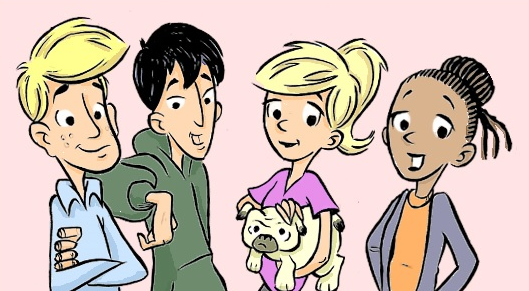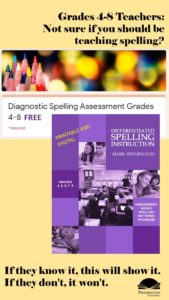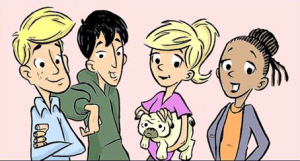Heggerty Bridge the Gap Review
Phonemic Awareness has achieved quite a resurgence within the reading community as of late. In some respects it seems to be the only area of agreement among structured literacy and balanced literacy advocates.
Literacy Resources, LLC has published four sets of wildly popular Heggerty phonemic awareness programs: Pre-K, Kindergarten, First Grade, and the Bridge the Gap intervention program for grades 2 and beyond. These programs are solid, yet hardly innovative curricula. Pre-school, kindergarten, and first grade teachers, as well as special education and reading intervention teachers, have used similar practice activities for years. Nothing new under the sun here.
My own teaching and writing experience is in reading intervention, so for the purposes of this comparative review, I’ll focus on the Heggerty Bridge the Gap intervention program © 2020, Literacy Resources, LLC and compare it to my own reading intervention programs. The Heggerty intervention program is designed for second graders and beyond; mine are similar (ages 8-adult).
Let me begin by saying that the Heggerty Bridge the Gap phonemic awareness intervention program has its merits. However, its limitations and instructional delivery may make other reading interventions a better choice for reading intervention teachers. Of course, as a publisher, I’m biased and making a sales pitch for my own reading intervention programs; however, I hope you’ll find the review to be accurate and informative, especially if you are considering purchase of the Heggerty program and using their professional development program.
Comparative Review: 5 Main Points
First, most of the Heggerty placement assessments are fine; however, a few of the “advanced phonemic awareness” assessments reflect skills which the research suggests are unnecessary to reading instruction, Dr. Timothy Shanahan lists in “Rip to Advanced Phonemic Awareness”. However, they are individually administered and take about 12-15 minutes per student. Most ages 8-adult Tier 2 and 3 intervention classes have a dozen or more students. Middle and high school reading intervention classes have more students. Let’s do the math: In my last seventh grade reading intervention class of 22 students, the Heggerty Bridge the Gap assessments would take 4-6 hours to complete. My Teaching Reading Strategies (Reading Intervention) program includes 5 phonemic awareness assessments and can be easily administered whole-class. Each assessment includes an audio file and takes about 5 minutes. Let’s do the math: 5 x 5=25 or 30 minutes tops. BTW, my newly released The Science of Reading Intervention Program uses the same placement assessments.
Second, the Heggerty Bridge the Gap assessment results necessitate differentiated small group or individualized instruction. Nothing wrong with that. My Teaching Reading Strategies (Reading Intervention) does the same, integrating assessment-based phonemic awareness activities with other rotating workshops, such as phonics workshops, fluency workshops, vocabulary workshops, etc. In contrast, The Science of Reading Intervention Program includes daily phonemic awareness lessons for every student. If you have a large class, limited instructional time, or are not yet skilled (or interested) in teaching a rotating workshop model of different phonemic awareness activities for different kids, take note of the following.
These [Heggerty] lessons are designed to be part of a Tier 2 or Tier 3 intervention. Lessons can be taught one-on-one or within a small group (5 learners or less)… The lessons are not written for Monday through Friday instruction, but rather the curriculum structure includes 3 parts, with each part increasing in difficulty.
-Literacy Resources, LLC
Both Bridge the Gap and my programs teach phoneme isolation, addition, deletions, substitution, manipulation, segmentation, and reversals. However, the quick, daily phonemic awareness activities taught whole-class in The Science of Reading Intervention Program may work better for you. My take is that all students, even those who pass the phonemic awareness assessments can benefit from manipulating spoken sounds.
Third, Heggerty’s Bridge the Gap is an add-on program. Add-0n programs often present management (time, materials, and resource) problems for reading intervention teachers. The Bridge the Gap phonemic awareness activities are not aligned with an instructional phonics sequence and no Heggerty program accomplishes their own recommendations:
Lessons are meant to take 5-7 minutes; an oral warm-up as one part of reading intervention. We recommend follow-up with phonics instruction and opportunities for reading decodable texts.
-Literacy Resources, LLC
Reading intervention teachers know that concurrent, coordinated oral phonemic awareness and speech-to-print synthetic phonics activities produce the best results. My Teaching Reading Strategies (Reading Intervention) and The Science of Reading Intervention Program achieve that perfect coordination between phonemic awareness, phonics, spelling, and syllabication instruction. Plus, Heggerty also specifically recommends the use of decodable texts. Both of my programs include 54 Sam and Friends Phonics Books–decodables that align with each phonemic awareness and phonics lesson. Students practice the focus sound spellings and 2 Heart Words (words with one or more irregular sound-spellings), along with 5 comprehension questions, margin notes, and a 30-second word fluency with each book. The decodables have been designed for older readers (ages 8-adult) with teenage characters and plots, beautifully illustrated by comic artist genius, David Rickert.
Fourth, the Heggerty program directors strongly recommend their professional development series. Here is another major time investment for teachers. While every moment of PD may be valuable, not every reading intervention teacher aspires to be a reading specialist. It is certainly true that most upper elementary, middle school, high school, and adult reading intervention teachers have taken a paucity of reading classes in their teacher preparation program. And Dr. Louisa Moats is correct in claiming that the science of reading is “rocket science.” However, good teaching resources don’t necessitate rocket scientists to teach them if they are designed well.
Having supervised reading intervention teachers for years, I know that easy-to-teach program materials don’t have to produce substandard instruction and learning. You could do a great job of teaching my phonemic awareness activities right now without any prep. Read the example lesson to confirm that I’m right. Simply read the scripted lesson and interact with your students. An easy-to-teach 2 or 3 minute lesson.

The Science of Reading Program Phonemic Awareness Activities
Fifth, the Heggerty Bridge the Gap program is reasonably priced at $59.00. However, unlike their three grade-level curricula, there is currently no digital version. Bummer. Some Heggerty teachers have filled this gap during the pandemic and distance learning with YouTube videos.
In contrast the 54 phonemic awareness lessons in my two programs are formatted as Google slides, perfect for the teacher in that the phonemic awareness teacher slides slide into the morphological awareness activities, into the blending, segmenting, and spelling activities, onto the sounds and spelling lessons, next to the Heart Words lessons, and finally to the Sam and Friends Phonics Books decodables. In other words, integrated digital curriculum–perfect for accelerated reading instruction. (Print the slides if you wish.)
By the way, students have their own set of practice slides to accompany these Daily 5 Activities, including independent practice with type in text boxes and drag and drop activities for the focus sound-spellings and Heart Words, the printable and tablet/Chromebook/phone displays of the decodables.
Fifth, the Bridge the Gap program provides a balanced approach to the many forms of phonological and phonemic awareness. This is not a phoneme isolation-only program. Similarly, my programs include practice in phoneme isolation, addition, deletions, substitution, manipulation, segmentation, and reversals; however, students learn in the whole-class setting.
In summary, Heggerty’s phonemic awareness materials produce helpful arrows for the reading teacher; however, other programs may accomplish the same instructional objectives with 1. Less assessment and instructional time 2. Whole-class instructional options 3. Integrated and coordinated phonemic awareness, phonics, and spelling lessons and 4. Digital instructional options. Plus, 5. The same balanced
Phoneme Awareness Research for Reading Intervention
Phonemic awareness is central in learning to read and spell.
Ehri 1984
The lack of phonemic awareness is the most powerful determinant of the likelihood of failure to read.
-Adams 1990
Phonemic awareness is the most potent predictor of success in learning to read.
-Stanovich 1996, 1994
All children can benefit from being taught directly how to break up spoken words into smaller units and how letters represent sounds.
-Shaywitz 1999
There is no age where a student is ‘too old’ for phonemic awareness training‒if the skills have not been mastered, the student should get training.
Kilpatrick 2016
Phonemic awareness training provides the foundation on which phonics instruction is built…
-Blevins 2017
The Science of Reading Intervention Program
The Science of Reading Intervention Program: Word Recognition includes explicit, scripted instruction and practice with the 5 Daily Google Slide Activities every reading intervention student needs: 1. Phonemic Awareness and Morphology 2. Blending, Segmenting, and Spelling 3. Sounds and Spellings (including handwriting) 4. Heart Words Practice 5. Sam and Friends Phonics Books (decodables). Plus, digital and printable sound wall cards and speech articulation songs. Print versions are available for all activities. First Half of the Year Program (55 minutes-per-day, 18 weeks)
The Science of Reading Intervention Program: Language Comprehension resources are designed for students who have completed the word recognition program or have demonstrated basic mastery of the alphabetic code and can read with some degree of fluency. The program features the 5 Weekly Language Comprehension Activities: 1. Background Knowledge Mentor Texts 2. Academic Language, Greek and Latin Morphology, Figures of Speech, Connotations, Multiple Meaning Words 3. Syntax in Reading 4. Reading Comprehension Strategies 5. Literacy Knowledge (Narrative and Expository). Second Half of the Year Program (30 minutes-per-day, 18 weeks)
The Science of Reading Intervention Program: Assessment-based Instruction provides diagnostically-based “second chance” instructional resources. The program includes 13 comprehensive assessments and matching instructional resources to fill in the yet-to-be-mastered gaps in phonemic awareness, alphabetic awareness, phonics, fluency (with YouTube modeled readings), Heart Words and Phonics Games, spelling patterns, grammar, usage, and mechanics, syllabication and morphology, executive function shills. Second Half of the Year Program (25 minutes-per-day, 18 weeks)
The Science of Reading Intervention Program BUNDLE includes all 3 program components for the comprehensive, state-of-the-art (and science) grades 4-adult full-year program. Scripted, easy-to-teach, no prep, no need for time-consuming (albeit valuable) LETRS training or O-G certification… Learn as you teach and get results NOW for your students. Print to speech with plenty of speech to print instructional components.


 The Sam and Friends Phonics Books have been designed to support systematic and explicit phonics instruction, such as is included in the author’s comprehensive
The Sam and Friends Phonics Books have been designed to support systematic and explicit phonics instruction, such as is included in the author’s comprehensive 
 Download 2 FREE lessons (178 slides and a 15 min video) to check out
Download 2 FREE lessons (178 slides and a 15 min video) to check out 

